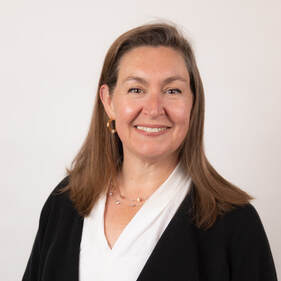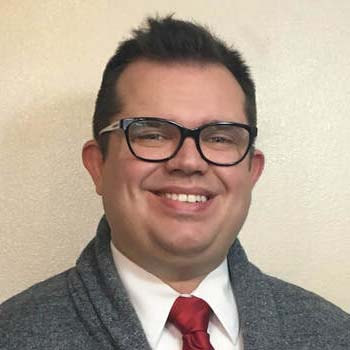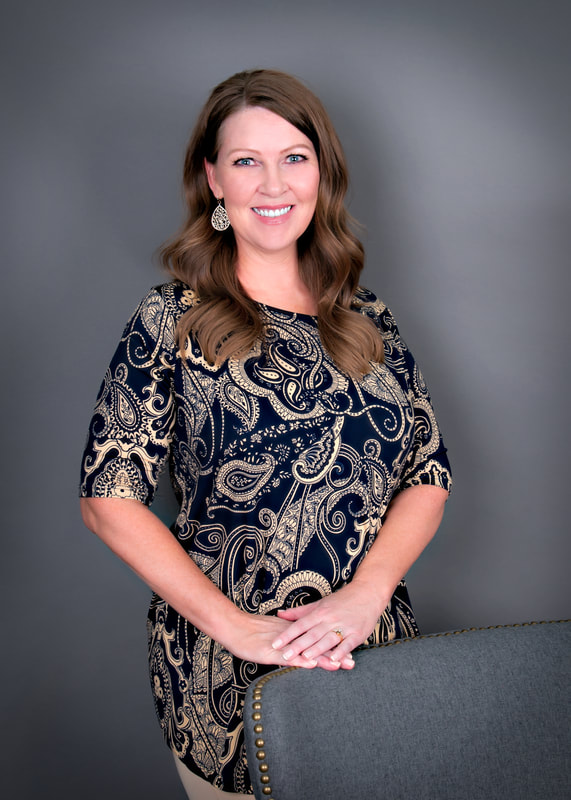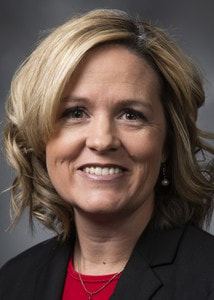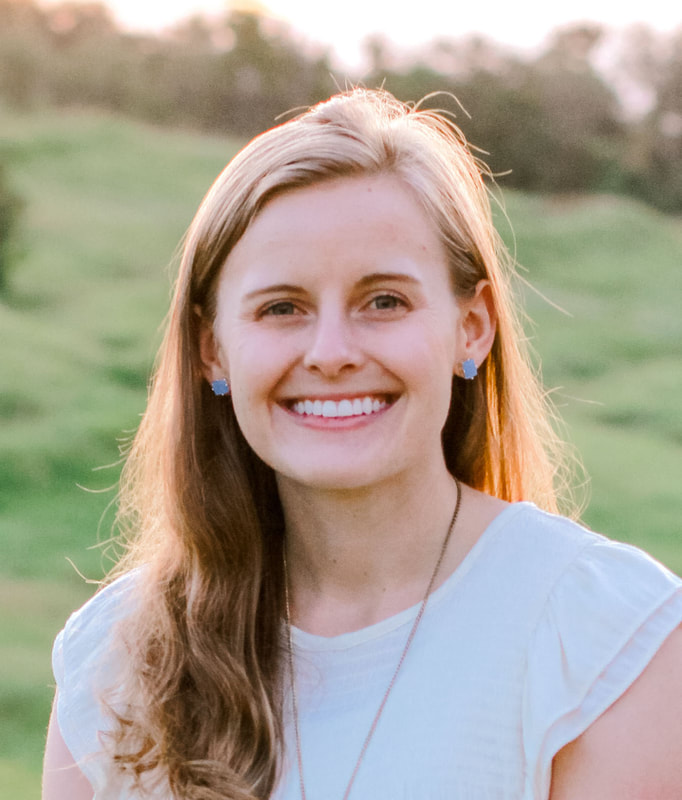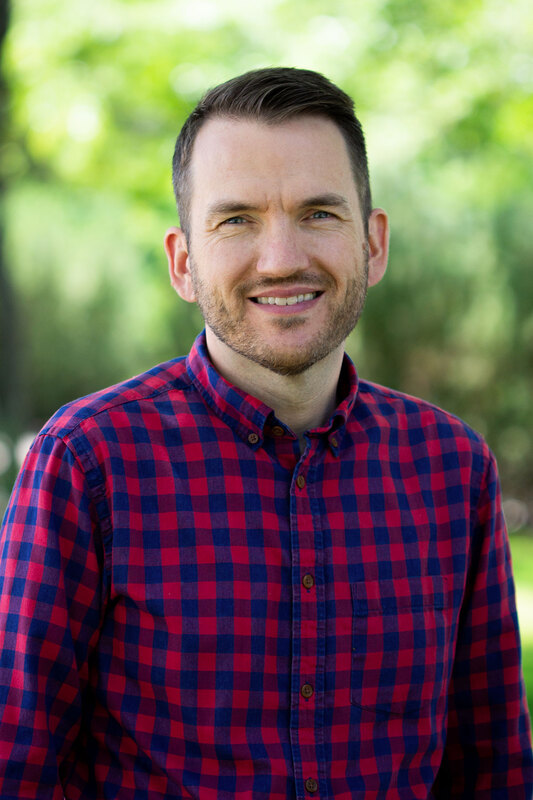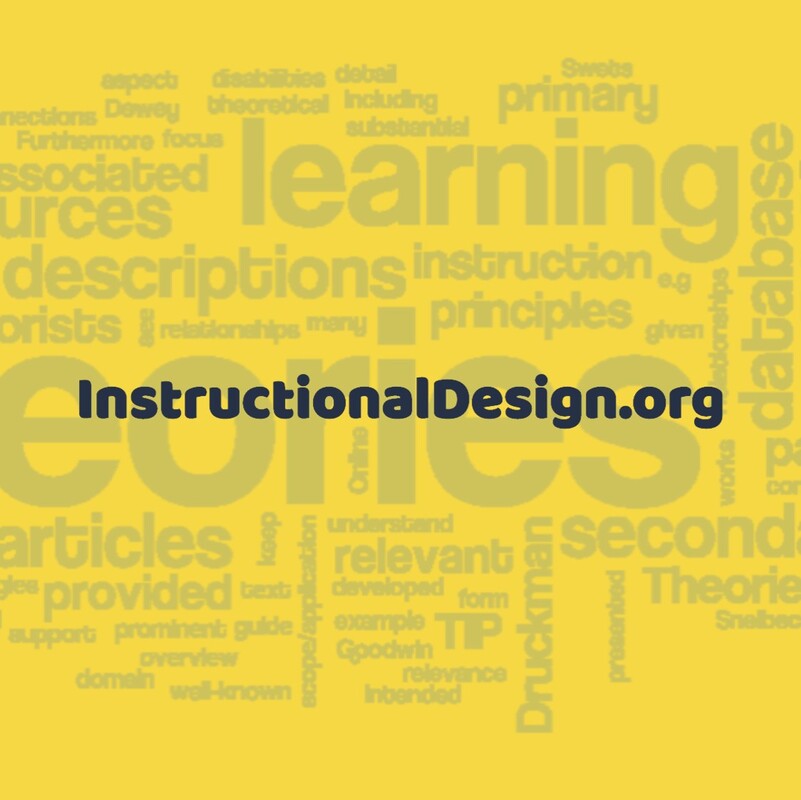|
Why did you pursue a career in the instructional design and technology field?
It was the most distinct field from anything I had done up to this point. What are some of your day-to-day responsibilities in your roles? I have designed a course based in large part on my final project for my design-track MS degree. I created a training course for professors to teach this course, and was then asked to apply to teach it when there was an opening. So I curated the readings/viewings, crafted the assignments (some came from work I did during my MS program), have developed daily lesson plans, and I am now teaching in the McKay building. How have you found your jobs? What advice do you have for someone trying to find a job in the instructional design and technology field? There is such a wide variety of possibilities in this field and you can find nearly anything you want. I absolutely love the course I'm teaching and the students I've had. I'm grateful to the IP&T program for giving me the knowledge to do this. In what ways did your graduate program prepare you for your career? I learned everything from theoretical frameworks of learning to practical tips with Zoom in the MS program. I have used the online discussions and other assignments I created in Dr. Graham's blended learning course, along with theory learned in Dr. Kimmon's 629. I used my skills from my internship with BYU Online to build out my course on Canvas, and as I said, my final design project led directly to an invitation to apply and teach the course I had created a training for. Why did you pursue a career in the instructional design and technology field?
I really wanted to help support teachers and educators by creating and providing solid instruction, resources, and materials that were easy to use, helpful, and based on research. What are some of your day-to-day responsibilities in your roles? Teaching pre-service teachers how to use technology in the classroom; creating lessons and materials for teachers to use. How have you found your jobs? What advice do you have for someone trying to find a job in the instructional design and technology field? I have found my jobs through professors and contacts from my time in the program. In what ways did your graduate program prepare you for your career? I had a lot of real life experience working with real clients on multiple design projects in my program. Those experiences have helped me become a better designer which really helped me to design the course I am teaching as well as design curriculum for teachers to use in their classrooms. Companies and Schools: Texas A&M University Job Titles: Instructional Consultant and Manager of Digital Learning Support Why did you pursue a career in the instructional design and technology field? I loved teaching, learning, and higher education. I also had a passion and knack for technology so the field brought both of those together. What are some of your day-to-day responsibilities in your roles? LMS administration, project management, and faculty consultations. How have you found your jobs? What advice do you have for someone trying to find a job in the instructional design and technology field? I look at specific university job boards. Why did you pursue a career in the instructional design and technology field?
I saw what instructional technology was capable of doing to help K-12 learners and I wanted to learn more about how to use technology effectively in K-12 contexts, as well as help others in K-12 contexts learn how to use technology effectively. What are some of your day-to-day responsibilities in your roles? Besides the common roles of teaching courses in my department, conducting research, and mentoring students, I get the opportunity to work side-by-side with K-12 practitioners to transform their pedagogy. A lot of my work focuses on partnering with teachers, coaches, and administrators who spend everyday working with a very diverse set of learners. I help these stakeholders serve their learners by equipping them with the knowledge and skills they need to design, implement, and evaluate technology-integrated teaching and learning. How have you found your jobs? What advice do you have for someone trying to find a job in the instructional design and technology field? I knew from the beginning of the program that I wanted to search for a faculty position. This knowledge directed everything I did in the program. Searching for a job may start in the last year of the program, but preparing for the job search really starts on day one. As soon as you know what it is you would like to do, begin looking at job postings and start building the skills and knowledge that you will need to be effective in your desired job. In what ways did your graduate program prepare you for your career? I was able to work on my teaching and research skills from day one (and actually even before my first day in the department) because I reached out to faculty members and got involved in their ongoing projects and teaching opportunities. I also found lots of opportunities for service by attending conferences and working with the faculty and staff on campus. All of these experiences helped me to build a strong CV for my job applications. 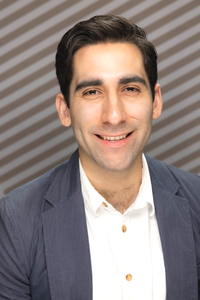 Companies and Schools: Ivy Hall Academy Job Titles: Science Teacher, Marketing Specialist Why did you pursue a career in the instructional design and technology field?
I wanted to make a difference in K-12 education by creating curriculum that is more useful, geared toward students' interests, and helped them be creative. What are some of your day-to-day responsibilities in your roles? I create the science curriculum for this private school from grades 3-9 and I get to teach it. Every day I'm creating things on the fly, and sometimes it's too fast but each year will get progressively easier as I have more of a repertoire of projects, activities, and curricula. I also handle marketing efforts such as customer profiling, psychographic analyses, interviews and surveys, and advertising activities. How have you found your jobs? What advice do you have for someone trying to find a job in the instructional design and technology field? I asked Dr. Chan about jobs he knew about for after I graduate since I was considering doing something in China or Taiwan and I knew he was very well-connected in those countries. After a change in direction, he told me about this private school that he was the president of the board over. I recommend talking with professors or other people connected to the field you want to go into. In what ways did your graduate program prepare you for your career? Everything dealing with surveys, evaluation, and curriculum development helped prepare me for my career. Not only did it help with my curriculum design responsibilities, but also my marketing responsibilities. Why did you pursue a career in the instructional design and technology field?
I started out my career as a classroom teacher, but soon found that my favorite part of the job was actually planning the lessons. I got excited about finding the right materials, scoping out units, and discovering how to present them in interesting ways. I also really enjoyed my IP&T class at BYU, where I learned to make a website and run some other cool educational technologies. And I have a strong passion for the importance of teaching and learning in effective ways to build individual capacity and personal freedom. Those things combined helped me decide that instructional technology was the right field for me. What are some of your day-to-day responsibilities in your roles? Managing course production projects, building Canvas pages, administering the LMS, managing student assistants, storyboarding content, coordinating with faculty/SMEs, ensuring course quality, ensuring course compliance with copyright and web accessibility standards, answering emails from online teachers and TAs, managing media production projects, learning new technologies, pursuing professional development. How have you found your jobs? What advice do you have for someone trying to find a job in the instructional design and technology field? I honestly feel that the biggest factor in finding a job was putting myself in the correct mindset. I knew what kind of job I wanted and at what type of institution. I did my best to remain positive throughout the job hunting process, and that positive growth mindset helped me to be recognized as someone that my current colleagues wanted to work with. My employers also said they were impressed by my professional-looking resume (after all, I was applying for a design position), my knowledge and commitment to the institution's mission and vision, and my previous experience working with faculty and designing courses similar to what I would be doing at my new job. My advice is to get as much practical experience as possible during school, to display that experience beautifully on your resume and in your portfolio, to have a clear idea of what you want, and to maintain a positive attitude throughout the job search. In what ways did your graduate program prepare you for your career? My graduate program helped give me an identity as an instructional designer. It helped me build my confidence that I can design courses, gave me language with which to talk about my experience to other professionals, and helped me have the theoretical and practical background I needed to be successful in my career. Why did you pursue a career in the instructional design and technology field?
I have been in the education sector since I was 21 years old, first as a teacher, then as an instructional designer, then as a principal. There was a natural progression from teaching to designing to educational leadership, especially since Mountain Heights was the first secondary school in the world to implement a fully open education resource (OER) curriculum. I started the IP&T program four years after becoming the school leader at Mountain Heights. What are some of your day-to-day responsibilities in your roles? I do a lot of program and faculty evaluation and I spend a lot of time working on the school infrastructure, along the lines of organizational leadership design to make sure that as we grow we can be proactive, deliberate, sustainable, and most of all, provide a rigorous educational experience for our students. Additionally, other main responsibilities include overseeing the budget, and implementing the vision and mission of the school as outlined by the schools' board of directors. How have you found your jobs? What advice do you have for someone trying to find a job in the instructional design and technology field? As a teacher, I enjoyed the design aspect of my craft. When I first interviewed for an online Spanish-teaching position, I noticed the school did not offer French. During the interview I let them know I would love the 0.5 Spanish position, but I also offered to design a French program too. I ended up with a full-time position as a result and got to build a French program as well. My position as a principal is not a typical IDT job. I was asked to join the board prior to the school opening because I got mouthy with a legislator and then I was invited to be the principal the year the school opened. My best advice is to network, job shadow, and try on lots of places to determine what you really like to do. In what ways did your graduate program prepare you for your career? I was already halfway through my career when I started the IP&T program, but my main takeaways include a deep dive into the research, a lot of practice in multiple evaluation fields, and a broad working knowledge of learning sciences—all of which help me be a better educational leader. Why did you pursue a career in the instructional design and technology field?
I wanted to take classes in IP&T to improve my students experience in my undergraduate accounting courses. I think technology has disrupted how students access information and learn and I wanted to have time to "think" about innovations in higher education and what value I could add to the courses I teach. What are some of your day-to-day responsibilities in your roles? In addition to the time I spend teaching in the classroom, I develop curriculum, assessments, learning experiences, and present at conferences. How have you found your jobs? What advice do you have for someone trying to find a job in the instructional design and technology field? I don't know much about specifically getting a job in the instructional design and technology field but I would say, do good work and the work comes to you. Network, find your passion, and then share your talents. In what ways did your graduate program prepare you for your career? Collaborating in groups and working with others. The opportunity to learn from others and also being able to share my insights with others. Why did you pursue a career in the instructional design and technology field?
I am enthusiastic about education. I believe IDT will play an essential role in education. What are some of your day-to-day responsibilities in your roles? Collect course materials, organize course materials, and design courses on Canvas. In what ways did your graduate program prepare you for your career? Foundation of learning theories, research approaches, critical thinking, technology, project developing and managing, and more. Companies and Schools: Thanksgiving Point, Utah Valley University, Brigham Young University Job Titles: Exhibit Design Assistant, Content Development Intern, Experiential Studio and Online Learning Supervisor Why did you pursue a career in the instructional design and technology field?
I loved the opportunity to think about learning and design and combine my interests of multimedia, graphic design, learning theory, and service. What are some of your day-to-day responsibilities in your roles? Coordinate projects with a design team of 3. I meet with librarians and collaborate to create solutions and resources for the teaching efforts. I also manage scheduling and resource development for a collaborative space in the library. How have you found your jobs? What advice do you have for someone trying to find a job in the instructional design and technology field? I volunteered at a place until I was hired, then worked on a project which led me to another job. I would recommend talking and shadowing as many people as you can. I crossed off a lot of jobs I thought I would enjoy by asking about people's day to day work. Also, don't over stress because you can't find the specific dream job. It always works out. In what ways did your graduate program prepare you for your career? I can't remember a lot of the specific things we discussed, but going through the design process so many times really helped to develop the right instincts for design. It provided a solid foundation of ways to think and knowing what kinds of questions to ask when solving problems. Companies and Schools: Ameritech Job Titles: LMS Coordinator, G.E. Faculty Why did you pursue a career in the instructional design and technology field?
I felt that instructional design is the future of higher education and that as more education shifts online this degree will become more useful. What are some of your day-to-day responsibilities in your roles? Teach lectures, design courses, evaluate students performance. How have you found your jobs? What advice do you have for someone trying to find a job in the instructional design and technology field? Building portfolio of past work experiences and design projects. In what ways did your graduate program prepare you for your career? It has helped me gain a broader perspective to help me succeed in understanding principles in learning and application of knowledge. Why did you pursue a career in the instructional design and technology field?
Because I love to help people achieve their fullest potential and there are limitless opportunities in instructional design and technology to do that. What are some of your day-to-day responsibilities in your roles? Teach courses, evaluate performance of students and employees, run reports, create data visualizations, advise, life design, research, analyze data, web design, conflict resolution, suicide prevention, advocacy, make presentations, lead university-wide training, deliver workshops, etc. How have you found your jobs? What advice do you have for someone trying to find a job in the instructional design and technology field? All of my jobs have been found via networking with others who are in an organization or role that I am interested in. I usually approach them to get information about the culture, work tasks, and goals to see if the company would be a good fit for me. In what ways did your graduate program prepare you for your career? The skills I learned in each class I am now able to use daily. In the program I learned how to prioritize and learn quickly so I can accomplish work tasks and adapt to changing environments. I feel extraordinarily agile because of the preparation of my program. The program also helped me change the way I think about my own potential and the potential of others for growth and development. My eyes were opened to key principles of design for the pursuit of happiness and success. Why did you pursue a career in the instructional design and technology field?
I love trying to solve really messy problems. I love taking tons of disorganized information and giving it structure so that it can be useful for people. I also really hate poorly made training. What are some of your day-to-day responsibilities in your roles? Interview subject matter experts about their tasks and document their process; compile notes from brainstorming sessions into a concise and consumable format; identify gaps in processes and bring them to the attention of the right people; gather data about how training is currently being used. How have you found your jobs? What advice do you have for someone trying to find a job in the instructional design and technology field? I found this internship through the IP&T Seminar. The Training Development Manager from Pathway came to recruit interns. I happened to be sitting at the table where the conversation was going on. When I overheard that they needed help developing a training manual, I was instantly interested. I would tell someone interested in finding a job in this field to take advantage of opportunities provided by the IP&T department. A conversation with someone at Seminar could lead to a job opportunity. In what ways did your graduate program prepare you for your career? I am only in my second semester of the IP&T program, but the courses I have taken have already helped me contribute at my current job. The Instructional Design courses taught me the jargon I needed to understand and converse with my co-workers. I use the principles I learned in my introductory classes every time I design something. My coding classes have helped me know how to talk to developers. The job I have at Pathway seems to be very aligned with the things I'm learning in the IP&T program. Why did you pursue a career in the instructional design and technology field?
So I could teach Arabic from a more educationally informed standpoint. What are some of your day-to-day responsibilities in your roles? I design instruction, assessment, learning materials; consult with other faculty by sharing my ID, tech, and assessment knowledge; I consult with students about their learning and approaches to learning. How have you found your jobs? What advice do you have for someone trying to find a job in the instructional design and technology field? Field-specific listservs and field-specific employment websites In what ways did your graduate program prepare you for your career? Theoretical knowledge and practical skills in instructional design; problem-solving; broad-minded thinking. Companies and Schools: Brigham Young University Job Titles: Faculty Consultant, Adjunct Faculty, BYU Online Program Administrator, Academic Product Manager, Academic Product Consultant Why did you pursue a career in the instructional design and technology field?
It is very applicable to my job responsibilities. What are some of your day-to-day responsibilities in your roles? Responsible for Independent Study and BYU Online: model course, course quality, instruction, marketing, innovation, and new academic products. How have you found your jobs? What advice do you have for someone trying to find a job in the instructional design and technology field? I applied for them. I had a lot of online teaching experience. In what ways did your graduate program prepare you for your career? I have studied and researched best practices in online learning. It has put me in a position to make better informed decisions particularly in intervention applications. Companies and Schools: Mountainland Technical College Job Titles: Instructional Designer, Office of Teaching and Learning Coordinator Why did you pursue a career in the instructional design and technology field?
It aligns with my interests in technology and education. What are some of your day-to-day responsibilities in your roles?
How have you found your jobs? What advice do you have for someone trying to find a job in the instructional design and technology field? Online job searches. I advise people to get a job that requires not too long of a commute, and also to ask about work culture in job interviews. Flexibility is so important to have for family life and it also is one way that instructional design is a great field to work in for families. In what ways did your graduate program prepare you for your career? Projects and internships gave real world experience! I don’t do research in my current job so those skills are more on hold. In general IP&T helped me learn how to think critically and how to find answers to my questions. Why did you pursue a career in the instructional design and technology field?
I love technology, I love learning, I love helping others learn. I especially am interested in informal learning. What are some of your day-to-day responsibilities in your roles? I oversee a team of students who help patrons use technology in the multimedia lab. I also design in-person workshops on creative and productivity software which we teach to the campus community. How have you found your jobs? What advice do you have for someone trying to find a job in the instructional design and technology field? I have been in a few positions at BYU, they have generally been referred to me by someone else at BYU. In what ways did your graduate program prepare you for your career? The BYU IP&T program prepared me to understand how learning and instruction work and how to design learning environments. It was a great environment to explore new ideas. Why did you pursue a career in the instructional design and technology field?
I actually pivoted and am pursuing a career in academia, studying organizational behavior. However, the principles and skills learned in IP&T have been tremendously influential in my preparation, particularly in preparing and teaching coursework. What are some of your day-to-day responsibilities in your roles? Instructional Designer: Strategy meetings to discuss learning goals, utilizing tools (e.g., Captivate, Qualtrics, PowerPoint, LMS [Canvas]) to prepare and deliver asynchronous and synchronous course content, sales meetings to pitch efficacy of training modules, problem solving on bugs and issues, etc. Current: Reading & digesting academic articles, crafting revisions to academic papers, discussing research projects, preparing course content for instruction, etc. How have you found your jobs? What advice do you have for someone trying to find a job in the instructional design and technology field? Make friends in different circles. Growing the reach of your network will allow you to see opportunities you didn't know existed before. In what ways did your graduate program prepare you for your career? 1. Clarity in Purpose. I now know that, while I'm no longer pursuing a full-time career as an instructional designer, I can leverage my experience in IP&T to pursue my current goals (e.g., develop meaningful and captivating learning opportunities for business students). 2. Project Management. So much of design is about the ability to break tasks down into their smaller constituents, and to tackle each piece in turn. I *seek to* use this skill every day. 3. Injecting Excellence into Education. I have experienced education from a variety of professors in various fields, and can confidently say that much of higher education is filled with well-meaning but generally undertrained and overwhelmed, busy academics, some of which lack practical experience in their fields. I felt that my time in IP&T opened my eyes to the possibilities available to teachers who are eager to improve their classrooms and their students' learning abilities. It's perhaps a blessing and a curse, as it makes poor instruction painful to receive. (And I realize that the last two sentences border on rude, and possibly unfair.) 4. Hope. Never once did my relatively unorthodox career goals faze my professors in IP&T, who consistently and energetically urged me forward toward whatever end. I am in their debt and hope to pay it forward to another generation of learners. Why did you pursue a career in the instructional design and technology field?
I was looking for a change in pace for my career, though I didn't really know where I wanted to end up. I knew that IP&T was a broad field and that it would open a lot of doors. What are some of your day-to-day responsibilities in your roles? Teaching class, mentoring student teachers, planning and carrying out outreach opportunities for local science teachers. How have you found your jobs? What advice do you have for someone trying to find a job in the instructional design and technology field? My jobs have mostly come from networking and talking to a lot of people. I built the relationships and when they needed someone to fill the job, they called me and asked me to apply. Why did you pursue a career in the instructional design and technology field?
As a public school teacher, I always felt like I was limited in my ability to make a difference through education. Instructional design offered me numerous ways to expand that influence. What are some of your day-to-day responsibilities in your roles? I engage with a lot of research projects centering on designing and improving online education. I teach pre-service education courses on technology integration. I'm also involved in several design projects where I get the chance to use some neat technology tools and resources. How have you found your jobs? What advice do you have for someone trying to find a job in the instructional design and technology field? My current jobs have come through my program advisers and other faculty members so I really haven't been on the real job market yet. Like most job searching, I think networking with peers and colleagues, including within AECT, will be my most valuable resource. In what ways did your graduate program prepare you for your career? Well, my masters in IP&T certainly prepared me for a PhD at Purdue. I really felt like I was more skilled and knowledgeable than a lot of my peers when first entering my PhD program, and I attribute that completely to the training I received at BYU. I believe my graduate work helped me to think creatively about education problems and design and conduct meaningful research. Why did you pursue a career in the instructional design and technology field?
I learned about online learning and educational technology when I was a faculty member at a community college. I saw it as an area that would continue to grow and I knew that there would be opportunities in the future. Plus it still allowed me to be involved in transforming peoples' lives through education which is something that I'm passionate about. What are some of your day-to-day responsibilities in your roles? I help faculty use research and educational technologies to remove barriers to student success in their online courses - that's what I consider "Innovation" This means that I'm frequently meeting with faculty and talking about how things are going in their online courses. I also spend a lot of time working with others in my organization to develop the infrastructure so that we can support educational innovation. How have you found your jobs? What advice do you have for someone trying to find a job in the instructional design and technology field? Connections with others is really important - that's how I found my first job out of school. When searching for jobs, I would recommend that they find organizations that align with their values or who are trying to work in areas that they would like to be working in. In what ways did your graduate program prepare you for your career? I think that the IPT program provided a good foundation for lifelong learning within the field. Tools and processes come and go, but the conversations and connections that I made within the program will continue to be with me throughout my career. Companies and Schools: Southern Virginia University Job Titles: Assistant Professor Why did you pursue a career in the instructional design and technology field?
Improving productivity and effectiveness by integrating technology and psychology. What are some of your day-to-day responsibilities in your roles? Teach class, serve on committees, continue in scholarship. How have you found your jobs? What advice do you have for someone trying to find a job in the instructional design and technology field? Leverage past experience and professional network. In what ways did your graduate program prepare you for your career? Offered me new frameworks and perspective to create highly effective learning teams. |
AboutLearn more about the career paths and day-to-day responsibilities of people working in the Higher Education and K-12 sectors of the IDT field! Respondents are students and alumni of the BYU IP&T program.
View by Company or School
|

